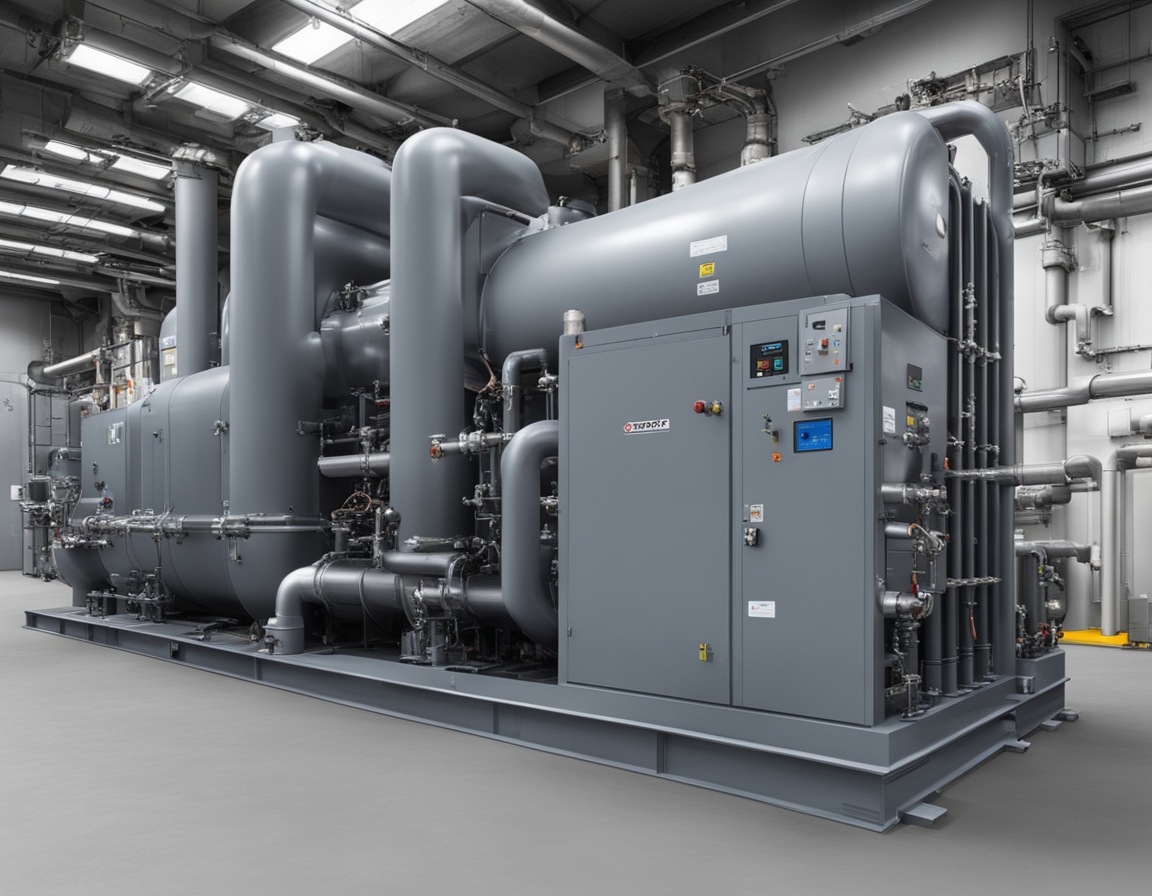
Advanced Technical Insights into Vapor Absorption Chillers (VAC)
Advanced Technical Insights into Vapor Absorption Chillers (VAC)
Vapor Absorption Chillers (VAC) are becoming increasingly popular in industrial and commercial applications due to their ability to utilize waste heat or renewable energy sources for cooling. Unlike traditional vapor compression chillers, VACs operate on a thermally driven cycle, making them highly energy-efficient and environmentally friendly. In this blog, we will explore the advanced working principles of VACs, the types of refrigerants used, efficiency optimization techniques, and their potential applications. Learn about Direct Fired Chiller | See VAM Product Page | CCHP Systems | Pump Solutions
-
Thermodynamic Cycle of VAC
The vapor absorption chiller works on a thermally driven refrigeration cycle, which consists of four major stages—Evaporation: The refrigerant (typically water) absorbs heat from the surroundings and evaporates, leading to the cooling effect. Absorption: The vaporized refrigerant is absorbed by a strong absorbent solution (such as lithium bromide or ammonia-water), creating a low-pressure zone that enhances continuous evaporation. Regeneration (Desorption): The absorbed refrigerant is separated using an external heat source, allowing the refrigerant to be reused in the cycle. Condensation: The separated refrigerant condenses, dissipating heat to the surroundings before being reintroduced into the evaporator.
-
Refrigerants and Absorbents in VAC
Different refrigerant-absorbent pairs are used in VACs based on the application requirements—Lithium Bromide-Water (LiBr-H₂O): widely used in large HVAC applications. Ammonia-Water (NH₃-H₂O): common in industrial systems for lower temperature applications. The right choice depends on cooling capacity, operating conditions, and heat source availability.
-
Efficiency Optimization in VAC
To enhance VAC efficiency: Utilize waste heat integration, implement multi-stage absorption cycles, employ advanced heat exchangers, and consider hybrid systems with conventional chillers. These strategies can boost COP to 0.7–1.4, making VAC highly competitive.
-
Conclusion
Vapor absorption chillers offer a sustainable and energy-efficient solution for industrial and commercial cooling needs. By leveraging thermally driven cycles, optimizing refrigerant selection, and implementing efficiency-enhancing techniques, VACs can contribute to reduced energy consumption and operational costs. With continued advancements in heat exchanger technology and renewable energy integration, the adoption of VACs is expected to rise, making them a crucial part of the future of sustainable cooling.
Contact us for a free consultation | Visit BROAD India
